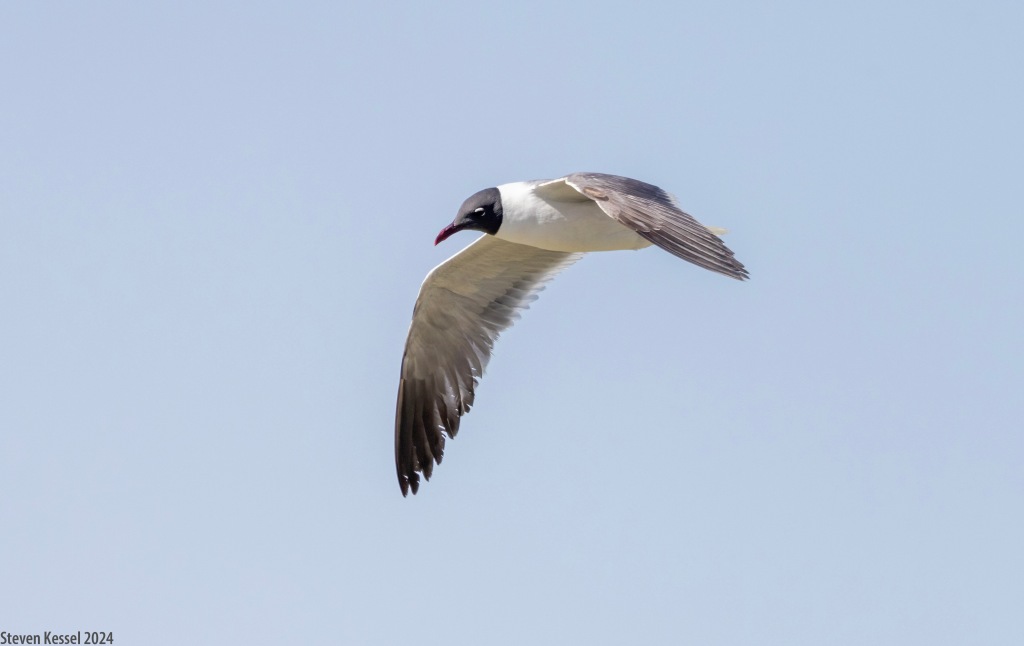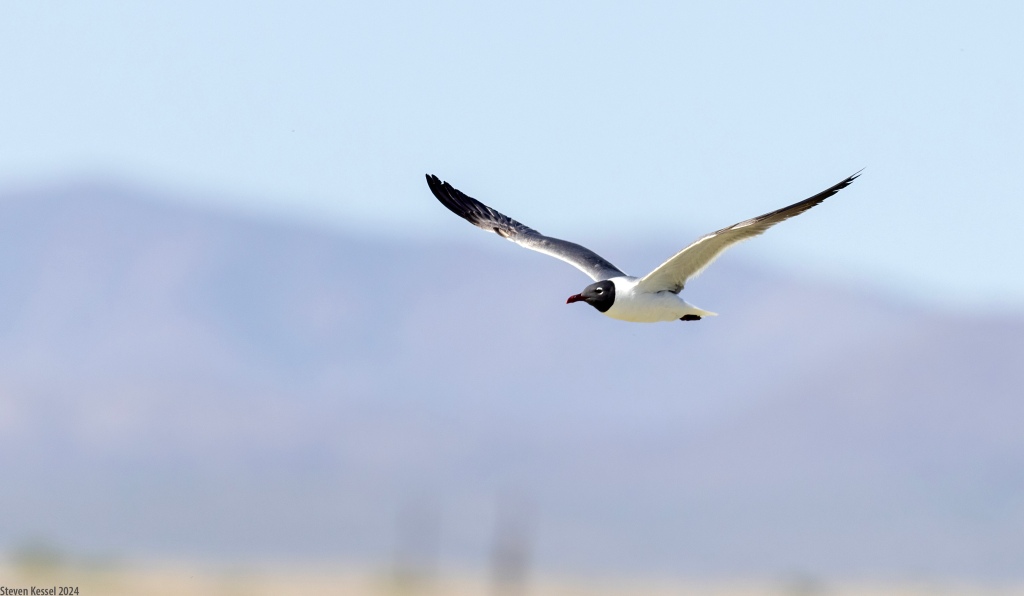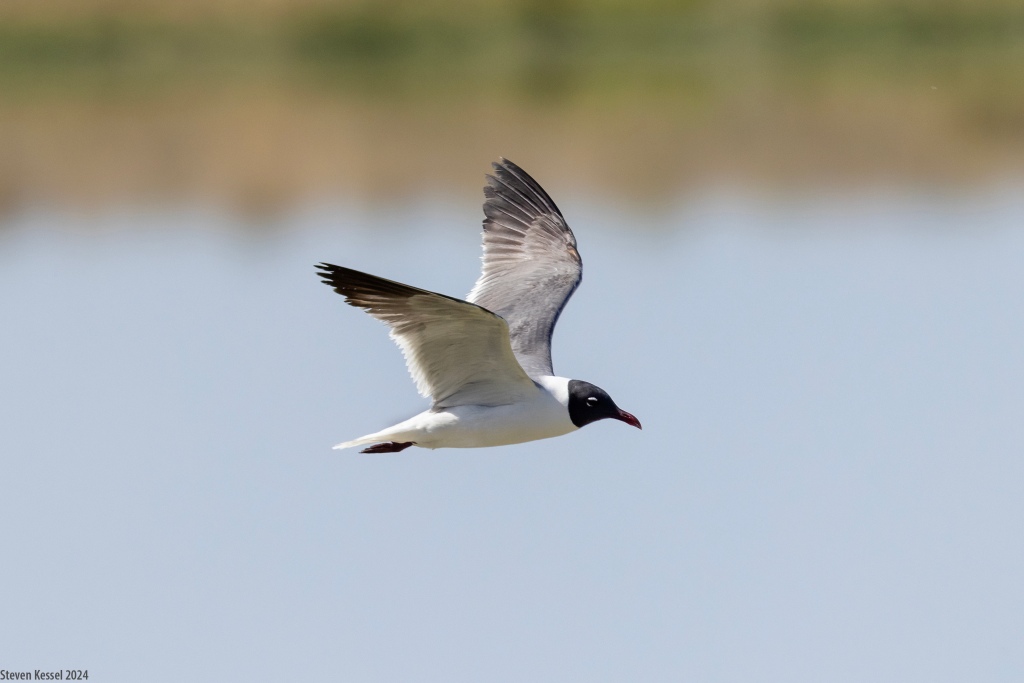You may enlarge any image in this blog by clicking on it. Click again for a detailed view.
A friend and I were at a large pond in southeastern Arizona the other day. Our purpose there was to photograph wading birds that were residing at the pond, including the Black-necked Stilts whose images I posted yesterday. My friend noticed another bird, a gull, that was making repeated flights over the pond. It had a dark head and looked to be out of place among the other bird life. We each photographed it.

I didn’t identify the bird until hours later, after we’d returned to our homes. The gull is a Laughing Gull. Its presence at the pond was a real puzzle: the gull was at a location that is far outside of its normal range.
Laughing Gulls are a common species within a range the includes the United States’ Atlantic and Gulf coasts, coastal Mexico, much of Central America, and the Atlantic and Pacific coasts of northern South America. In this country the gulls’ range does not extend inland. The closest location to southern Arizona that falls within the Laughing Gulls’ range is the Pacific Coast of Baja California, in Mexico, several hundred miles from where we photographed this bird.
Our eyes weren’t deceiving us. This Laughing Gull had wandered far afield from its normal range and was now foraging in a place where Laughing Gulls should not be found.

So what was this gull doing so far beyond its range? One possible explanation is that it had been carried inland by a storm system. Winter and spring storms move from west to east in the United States and Mexico. Possibly, a storm moving inland from Baja, California, had swept this gull along with it. Or, perhaps, the gull had gotten lost during its spring migration north from Central America to the United States.

One of the truly fun aspects of nature photography is that unexpected events are always possible. Seeing a Laughing Gull where it “shouldn’t be” is one of those events.
Images made with a Canon R5, Canon EF 400mm f4 DO II lens+Canon EF 1.4x telextender, M setting (auto ISO) ISO 1000, f6.3 @ 1/4000.
